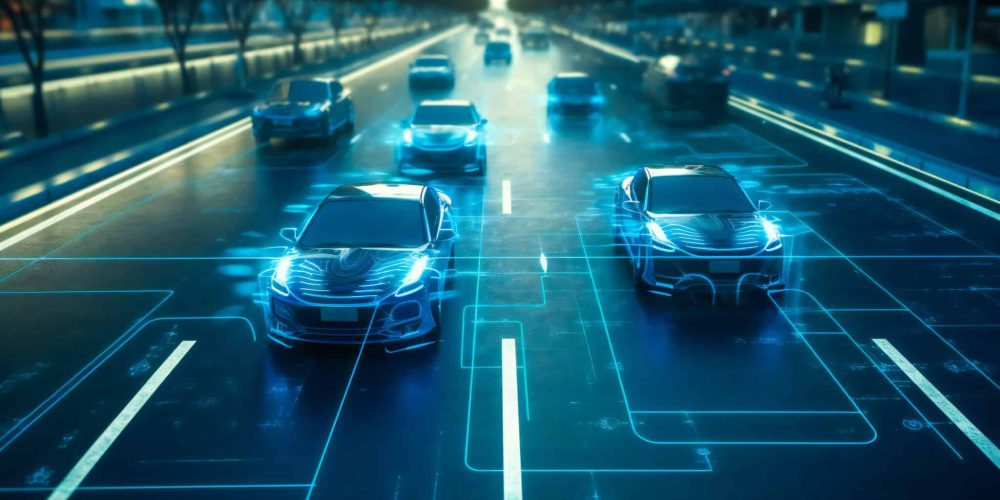One key component of Advanced Driver-Assistance Systems (ADAS) is the Ultrasonic Sensor, a device that has gained significant attention in recent years, and for good reason. Ultrasonic sensors play a crucial role in many ADAS applications, including parking assistance and collision avoidance, making them integral to the operation of modern vehicles. This blog post will dive into the world of ultrasonic sensors in cars, exploring their functionality, importance, and the impact they have on driver safety.
What are Ultrasonic ADAS Sensors?
Ultrasonic sensors are one of the many types of sensors used to increase the safety of modern vehicles. These sensors use the principles of ultrasound to detect objects around the vehicle. Similar to how bats use echolocation, these sensors emit high-frequency sound waves that humans can’t hear. When these waves hit an object, they bounce back to the sensor. The time taken for the wave to return allows the sensor to calculate the distance between itself and the object. Ultrasonic sensors can work in various conditions and can detect both stationary and moving objects. In some cases, these sensors can work with other systems to apply the brakes and avoid a potential collision, creating a safer driving experience for everyone on the road.
Ultrasonic sensors have become more widely available in modern vehicles, with manufacturers incorporating them into their ADAS systems to improve safety and convenience. These sensors are usually placed around the car’s perimeter, usually inside the front and rear bumpers. They often work in conjunction with other ADAS sensors, such as cameras, radar, and LiDAR.
Benefits of Ultrasonic Sensors in Car Safety
Ultrasonic sensors significantly enhance driver safety by providing an extra set of eyes, or in this case ears, to monitor the vehicle’s surroundings. When an object is detected, the system alerts the driver, reducing the risk of accidents.
Additionally, in parking scenarios, ultrasonic sensors are extremely useful. They measure the distance to obstacles, even in tight spaces, and are one of the main sensors in parking assistance systems. Once parked, these sensors are able to survey the surrounding cars and let you know if your car is positioned correctly. This can help to avoid issues such as door dings and scratches, saving you time and money on potential repairs.
Ultrasonic sensors excel when the vehicle is moving slowly, making them ideal for reversing into or leaving a parking spot.
One of these sensors’ more interesting safety benefits is their role in airbag deployment. By detecting the driver’s and passengers’ exact position, they can determine if it is safe to deploy the airbags in a collision or if it will cause more harm in small accidents. This helps to minimize potential injuries that could arise from unnecessary or unsafe airbag deployment.
Challenges and Limitations of Ultrasonic ADAS Sensors
Despite the many advantages of ultrasonic ADAS sensors, they have certain limitations.
First, because these sensors are audible, they are susceptible to interference from external noise, such as honking cars or construction. This can cause false readings and potentially impact their accuracy.
Also, ultrasonic sensors have a limited range and are not able to detect objects that are too far away (8 -15 feet). This could be an issue in situations where the vehicle is moving at high speeds or when there is a need for long-distance detection. A radar sensor is usually used in situations where ultrasonic sensors fall short.
Since these sensors need to be able to project sound, they are most often installed on the outside of the vehicle. This can lead to small circle-like indents on the front or rear of the car that are not appealing to most drivers. However, Tesla has developed a way for these sensors to detect sound through metal, making the future of these sensors even more promising.
Like many ADAS systems, ultrasonic sensors have some challenges and limitations. But, with technological advancements and integration with other sensors, these challenges can be overcome.
Read more: ADAS Limitations: What Challenges Does the Industry Face?
Ultrasonic Sensors and Autonomous Driving
Ultrasonic sensors are positioned to play a large role in the evolution of autonomous driving, especially as Level 3 autonomous driving becomes more mainstream.
These sensors have the ability to detect objects at close range, making them ideal for low-speed automated maneuvers like parking and maneuvering in tight spaces. When it comes to parallel parking, ultrasonic ADAS sensors can make this troublesome maneuver a lot less stressful. When combined with autonomous driving capabilities, these sensors can help parallel park your car without you touching the wheel.
As technology continues to evolve and overcome current limitations, we can look to a future where driving is safer, easier, and more efficient. The journey towards autonomous driving is well underway, and ultrasonic sensors are sure to be part of the solution.
Learn More About ADAS Sensors or Start Your Own ADAS Calibration Center
Ultrasonic sensors play an essential role in advanced driver-assistance systems. They enhance vehicle safety and driving efficiency by assisting in parking and preventing collisions. As automotive technology evolves, we can expect their functionalities to expand, making our roads even safer. The calibration of ultrasonic sensors is a critical aspect to ensure their proper functioning. Calibration ensures that the sensors are producing accurate readings and responding appropriately to their environment. This process typically involves adjusting the sensor’s sensitivity and detection range according to the specific requirements of the vehicle. Contact us to learn more about establishing your own ADAS calibration center today.







